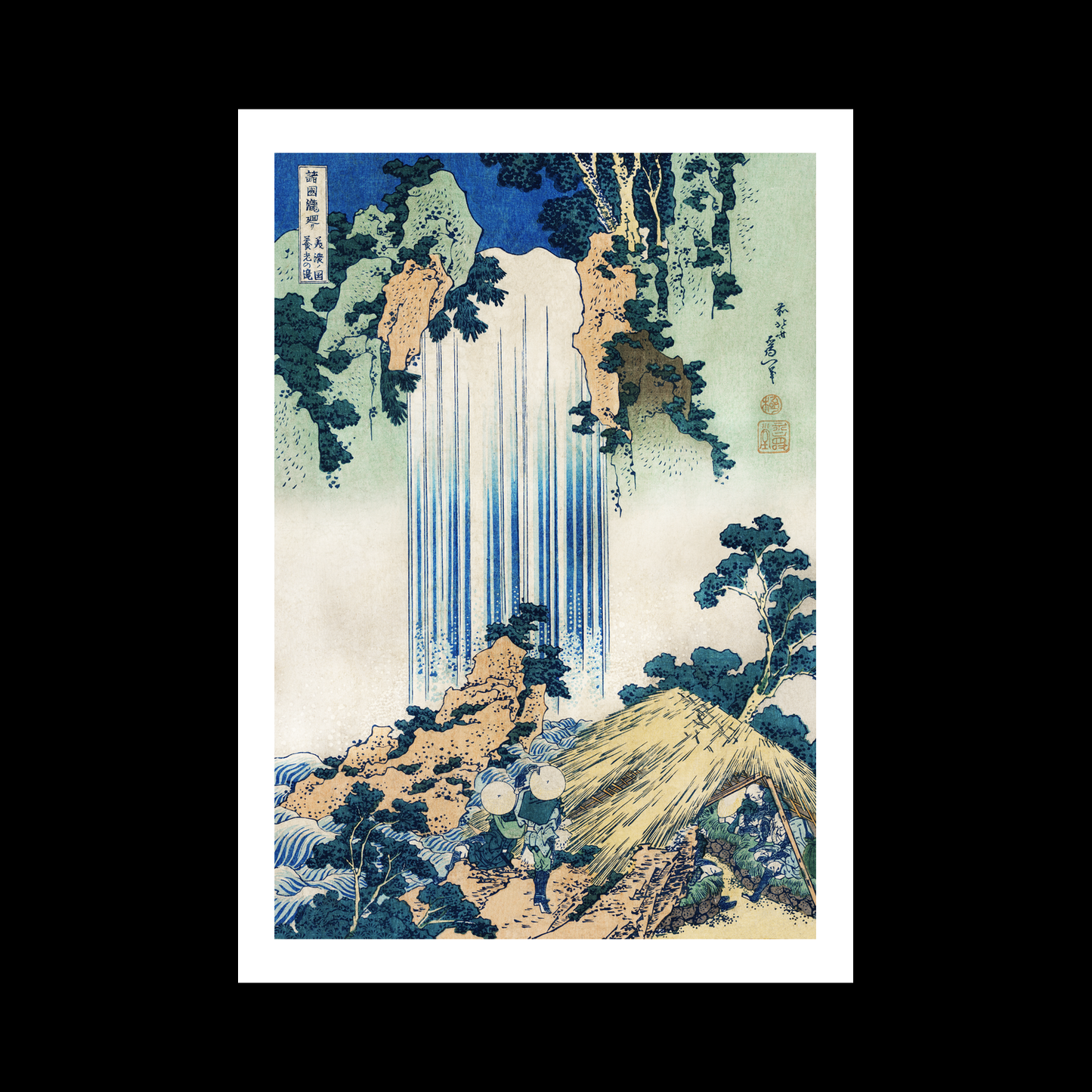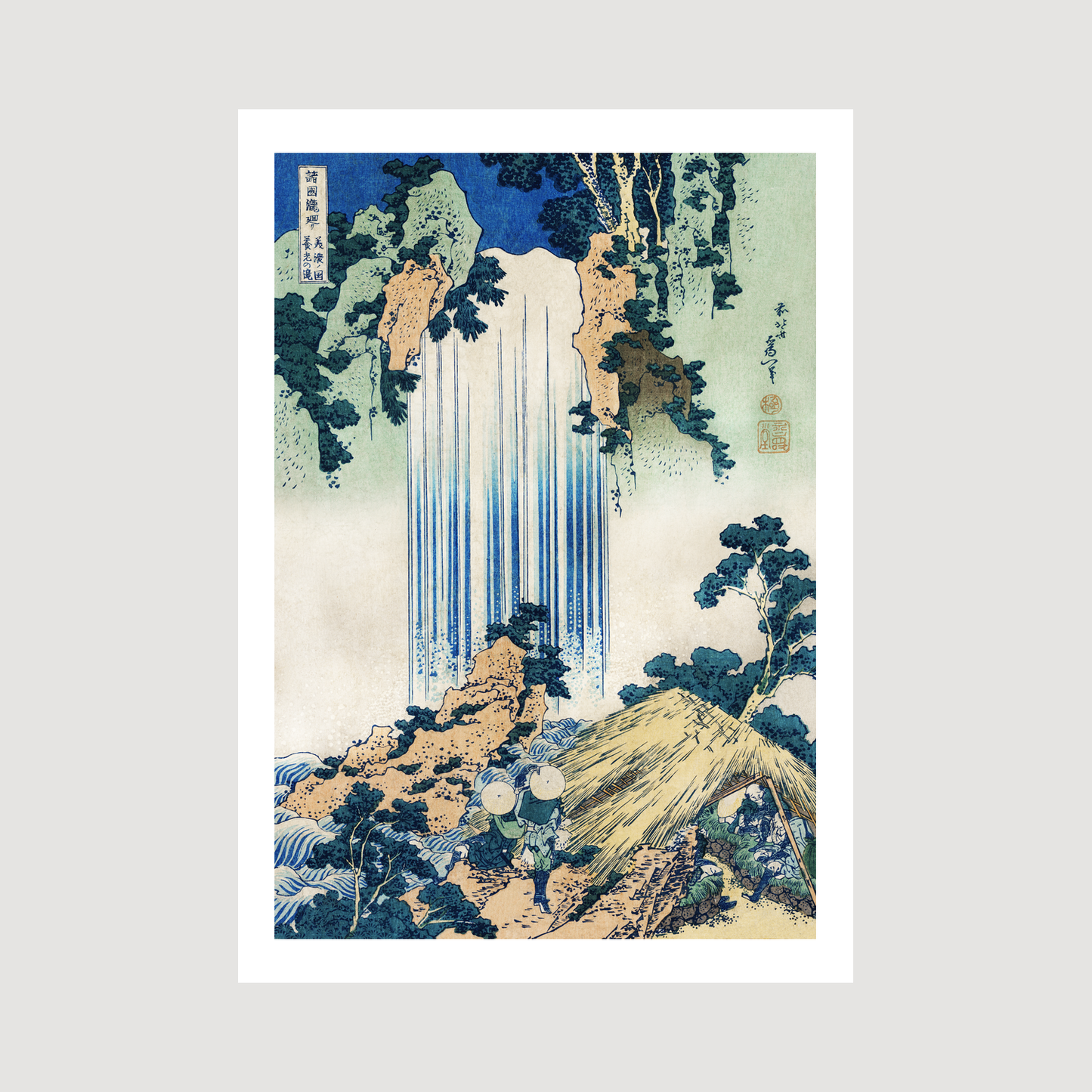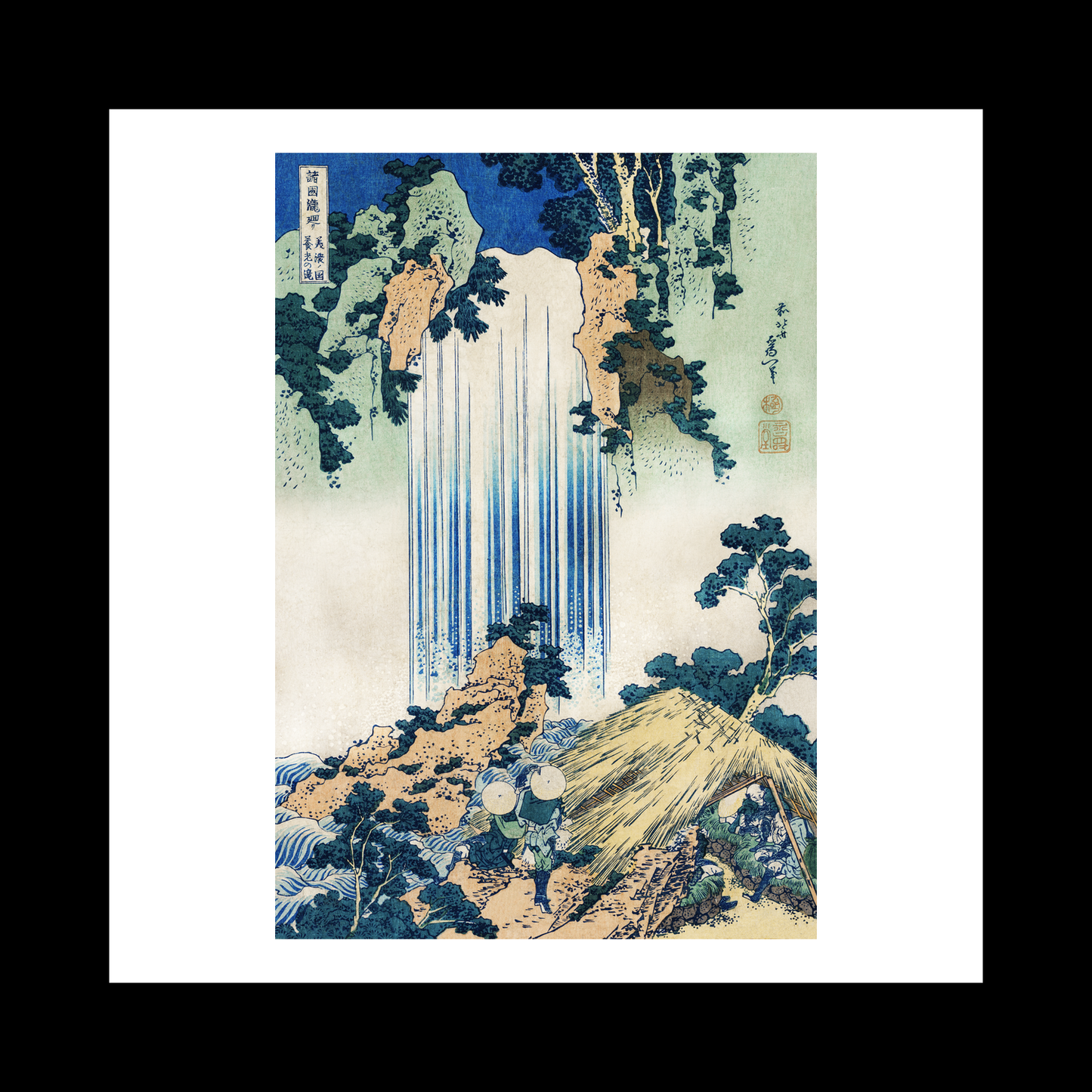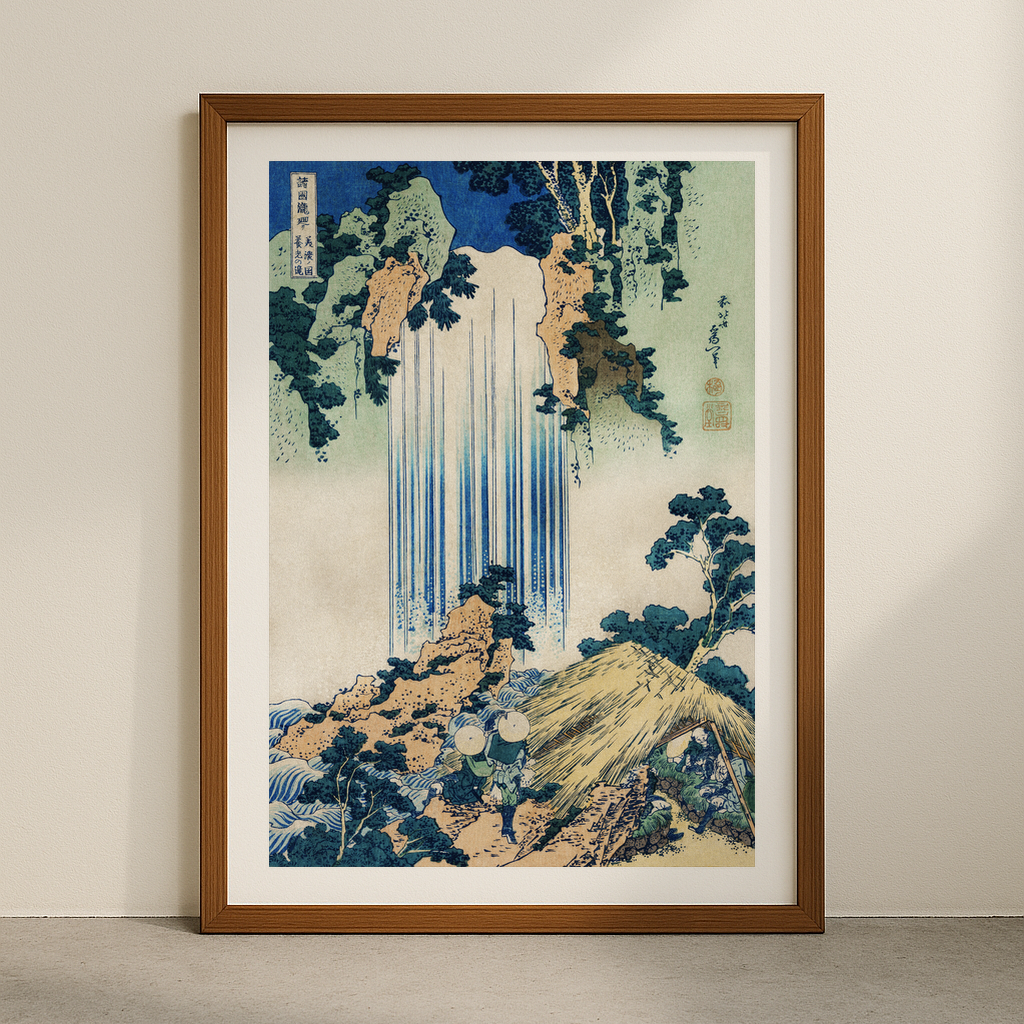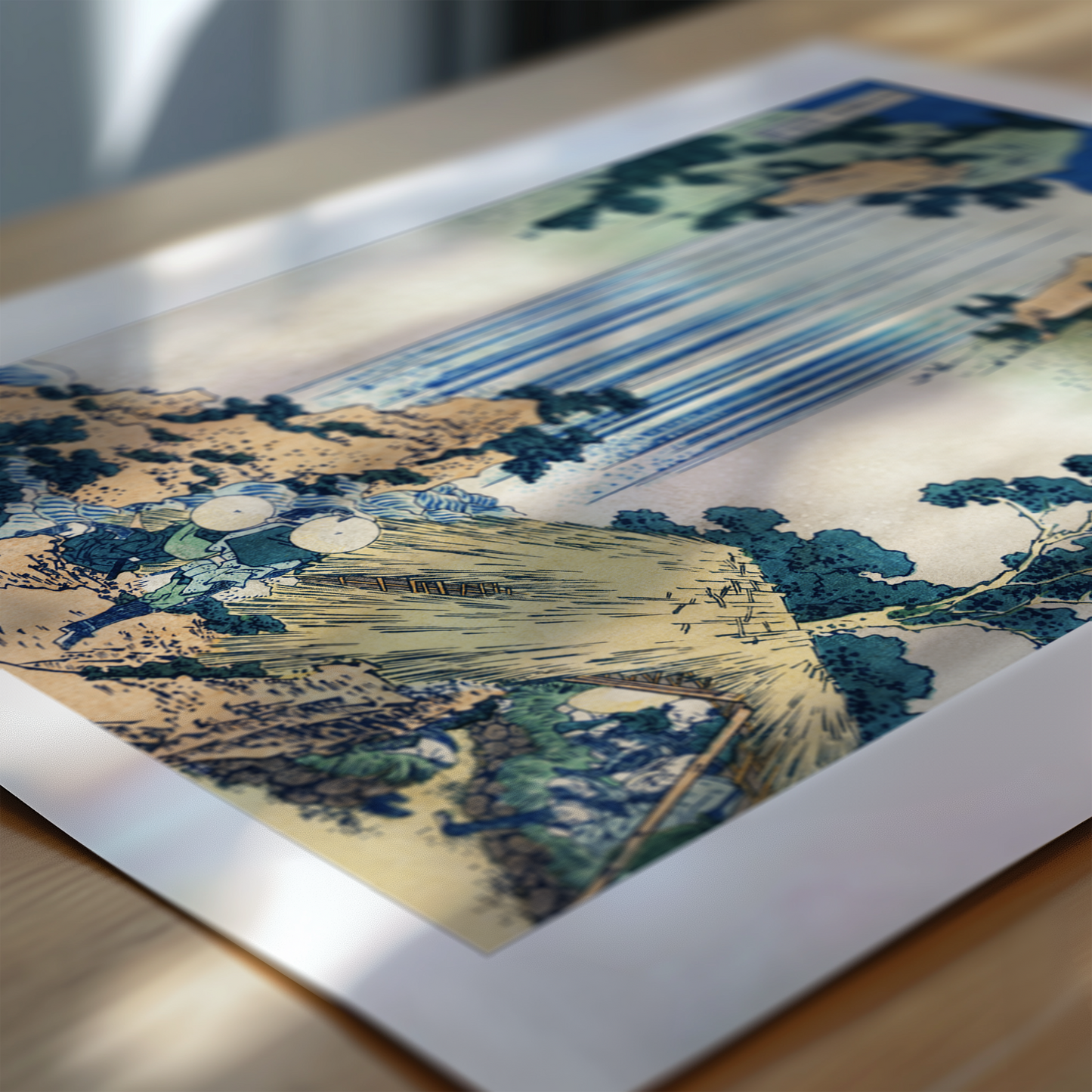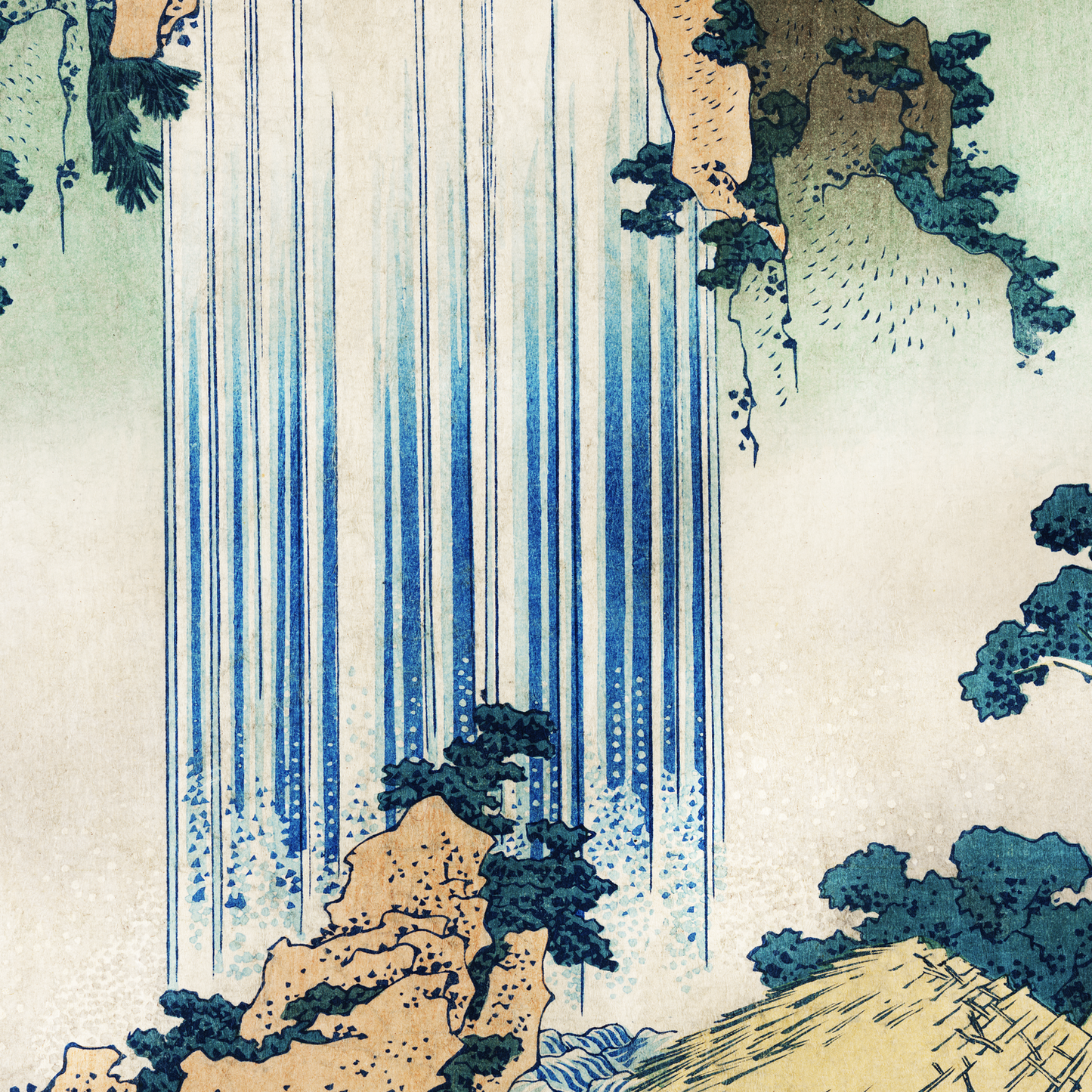1
/
of
6
Yoro Waterfall in Mino Province
Yoro Waterfall in Mino Province
Regular price
£12.45 GBP
Regular price
Sale price
£12.45 GBP
Taxes included.
Quantity
Couldn't load pickup availability
"Yoro Waterfall in Mino Province" exemplifies Hokusai's masterful command of the ukiyo-e style, capturing the majestic cascade of water against the dramatic landscape of Mino. The composition draws viewers into the scene through carefully placed human figures - two travellers gazing at the waterfall's might, while others rest nearby, providing scale and human connection to nature's grandeur. Hokusai's distinctive use of Prussian blue pigment and precise linework creates a mesmerising sense of movement in the falling water.
Created during Japan's Edo period (1615-1868), this piece belongs to Hokusai's broader exploration of Japanese landscapes and waterfall series. The Yoro waterfall held particular significance in Japanese folklore, said to produce sake instead of water after a filial son discovered it while searching for alcohol to help his elderly father. This cultural context adds layers of meaning to what might otherwise appear as a simple landscape study.
Hokusai crafted this work when he was in his 70s, during a period of his career when he had developed his most refined techniques. His attention to detail is evident in the careful rendering of water spray, the textured rock faces, and the delicate balance between negative and positive space. The artist's fascination with water in motion appears throughout his career, but here he achieves a particular harmony between the natural world and human presence, reflecting the Japanese aesthetic principle of man existing within nature rather than attempting to dominate it.
The piece demonstrates Hokusai's influence on both Eastern and Western art traditions, showcasing his ability to combine traditional Japanese techniques with innovative compositional approaches that would later inspire European Impressionists. His precise attention to atmospheric effects and the way he captures momentary impressions of nature revolutionised landscape art in both hemispheres.
View full details
Created during Japan's Edo period (1615-1868), this piece belongs to Hokusai's broader exploration of Japanese landscapes and waterfall series. The Yoro waterfall held particular significance in Japanese folklore, said to produce sake instead of water after a filial son discovered it while searching for alcohol to help his elderly father. This cultural context adds layers of meaning to what might otherwise appear as a simple landscape study.
Hokusai crafted this work when he was in his 70s, during a period of his career when he had developed his most refined techniques. His attention to detail is evident in the careful rendering of water spray, the textured rock faces, and the delicate balance between negative and positive space. The artist's fascination with water in motion appears throughout his career, but here he achieves a particular harmony between the natural world and human presence, reflecting the Japanese aesthetic principle of man existing within nature rather than attempting to dominate it.
The piece demonstrates Hokusai's influence on both Eastern and Western art traditions, showcasing his ability to combine traditional Japanese techniques with innovative compositional approaches that would later inspire European Impressionists. His precise attention to atmospheric effects and the way he captures momentary impressions of nature revolutionised landscape art in both hemispheres.
